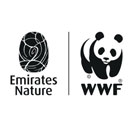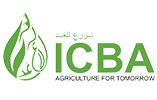Valuing natural capital, protecting and restoring coastal natural ecosystems acting as Blue Carbon sinks
Project activites: Baseline scientific surveys, ecosystem and biodiversity assessments, restoration design & testing, management plan & restoration success monitoring, Blue Carbon accounting.
Blue Carbon Accounting
Blue Carbon Accounting surveys were conducted within the two coastal lagoons. Analysis of 54 sediment cores shows that the carbon storage potential of these seascapes goes beyond just mangrove forests.
Scientific monitoring and surveys will inform adaptive management approaches on a seascape scale, and measurable results will be used to help guide future coastal ecosystem restoration plans in the UAE and across the wider region.
The project will focus on coastal areas where local communities are actively engaging through numerous activities primarily related to fisheries and tourism and recreation. Ecosystem services will be assessed, with the involvement of local beneficiaries, in an effort to make a business case to attract investment and political support.
-
Demonstrate the links between coastal ecosystem services, climate mitigation and socio-economic co-benefits, and positively influence stakeholder dialogues and decision-making;
-
Achieve measurable greenhouse gas emissions reductions or avoidance;
-
Implement a combination of protection and targeted restoration interventions in at least one seascape in Abu Dhabi encompassing critical Blue Carbon ecosystems and critical habitats for endangered species.
-
Collecting scientifically sound information on the ground (climate vulnerability assessment, socio-economic surveys, biodiversity surveys, anthropogenic pressure mapping, etc.);
-
Consulting with local communities and key economic sectors to estimate socio-economic benefits and perceived value of coastal ecosystems (e.g., fishing communities, tourism, etc.);
-
Identifying priority seascapes of the UAE through a methodological site-selection process;
-
Developing a set of criteria and guidance for site selection that can guide future conservation and restoration efforts;
-
Assessing optimum restoration and conservation strategies for the priority site(s), and testing them;
-
Implementing place-based conservation and restoration activities;
-
Monitoring results of the restoration/management strategy implemented;
-
Applying for the designation recognition of the site(s) as Marine Protected Areas (MPAs) and/or Ramsar site(s);
-
Creating Blue Carbon inventories to estimate carbon stocks and sequestration potential of the selected site(s);
-
Developing recommendations to support spatial management.







.jpg)
.jpg)
.jpg)
.jpg)